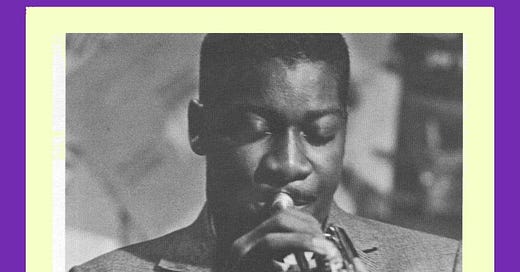Star-Crossed Booker Little [1938-1961]
Copyright ® Steven Cerra, copyright protected; all rights reserved.
“The star-crossed Little hardly had time to get his career started. He came from Memphis, part of a small but eventually significant group of players which included George Coleman and Charles Lloyd, and studied in Chicago, where he was playing with Max Roach at the age of 20. He already sounds a considerable talent on the drummer's Deeds Not Words (1958), and by the time of his recordings with Eric Dolphy (Far Cry, 1961), and the three albums he made under his own leadership, it was clear that here was a thrilling young talent. He had an unusually gentle sound for a trumpeter, at times almost Chet Baker-like, with a clean open tone and a bright but not sharp intonation, but his choice of notes and fluent exposition of subtle and often difficult ideas pointed towards a genuinely innovative talent. Like his sometime playing partner Dolphy, he hinted at the way free jazz would go while remaining loyal to an essentially orthodox post-bop vocabulary (it was piquant that, like Dolphy, he also took part in Coltrane's sessions for Africa/Brass, 1961). It's often been suggested that Little was the next step on from Clifford Brown; and all the more tragic that, like Brown, he was halted in his earliest prime. Illness which suggested a condition akin to arthritis struck him down and he died of uraemia.”
Richard Cook Jazz Encyclopedia
“Little’s playing was characterized by an open, gentle tone, a breathy attack on individual notes, and a subtle vibrato. His solos had the brisk tempos, wide range and clean lines of hard bop, but he also enlarged his musical vocabulary by making sophisticated use of dissonance, which, especially in his collaborations with Eric Dolphy, brought his playing close to free jazz.”
David Wild in Barry Kernfeld, ed., The New Grove Dictionary of Jazz
“On a recording of one of Booker Little’s compositions, the progression alternates between the A section comprising “quickly moving chords” and the B section comprising “more open spaces where one chord repeats.” Each time Little came to the first part of the progression, he improvised intricate nonmotivic melody lines, but when he came to the bridge, he deliberately changed his approach to “show the form of the tune” as improvisers “like to do.” There he played “lyrical melodies” with sustained pitches, “left more spaces between his figures, and occasionally performed single note riffing figures or developed simple patterns as sequences.””
Pianist Don Friedman in “Cultivating the Soloists Skills” section of Paul Berliner, Thinking in Jazz, The Infinite Art of Improvisation [1994]
I have long been a great fan of the efforts of Kenny Mathieson to chronicle and explain in lay terms stylistic developments in post World War II Jazz. He began his narrative with Giant Steps: Bebop and The Creators of Modern Jazz 1945-1965 [1999].
The following chapter is contained in the second work in the series: Cookin’ Hard Bop and Soul Jazz 1954 -1965 [2002].
Both books are published in Edinburgh by Canongate Press Ltd and both are still available as affordable paperbacks from online retailers.
While certainly not as trend setting as the work of Dizzy Gillespie, Clifford Brown or Miles Davis, over the years spanned by Mr. Mathieson’s second book, a number of enjoyable recordings were produced that featured the work of the journeyman trumpeters such as Booker Little [Donald Byrd and Blue Mitchell] are also included in this grouping].
Mr. Mathieson’s overview of Booker’s work is a comprehensive remembrance of his music. It will also provide those readers who are new to Little’s music with a helpful retrospective of it.
Keep reading with a 7-day free trial
Subscribe to CerraJazz Substack to keep reading this post and get 7 days of free access to the full post archives.




